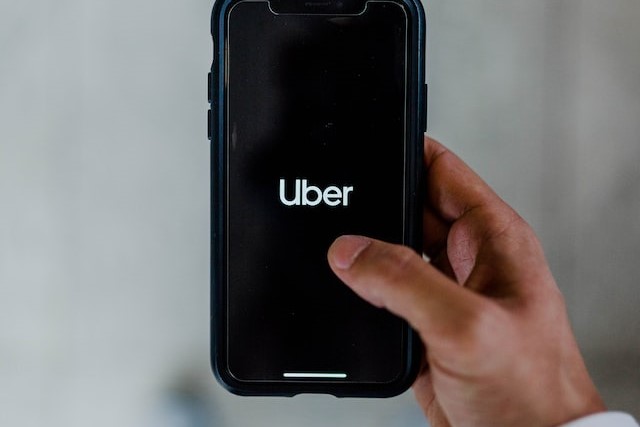Before we get into the specifics of Uber, let’s understand competitor analysis. Competitor analysis is a strategic research method companies use to identify, evaluate, and understand their current and potential competitors within the market. It’s an essential business strategy component and instrumental in understanding the industry landscape.
The process usually involves the following steps:
- Identifying Key Competitors: The first step is to identify who your competitors are. These may be direct competitors (those who offer the same or similar products or services as you) or indirect competitors (those who provide different products or services but compete for the same consumer dollar).
- Analyzing Competitors’ Strategies and Objectives: Once competitors are identified, the next step is to understand their business strategies and objectives. This may involve analyzing their marketing materials, financial performance, customer reviews, or any public information available about the company.
- Assessing Competitors’ Strengths and Weaknesses: This step involves evaluating the identified competitors’ strengths and weaknesses. Strengths include unique products or services, strong brand recognition, and superior customer service. Weaknesses include poor product quality, weak customer service, or high prices.
- Understanding Competitors’ Products/Services: Understanding what your competitors offer and how your products or services compare is important. This could involve looking at features, quality, pricing, customer service, and marketing strategies.
- Observing Competitors’ Reaction Patterns: Some companies react more aggressively than others when faced with competition. Understanding these patterns lets you predict how these companies might respond to your business strategies.
- Drawing Conclusions and Formulating Strategy: The final step is to take all the information gathered from the analysis, draw meaningful conclusions, and use those to formulate or adjust your business strategies.
The main goal of a competitor analysis is to understand the competitive landscape, spot opportunities and threats, and position your company most advantageously. It helps to inform strategic decisions, from product development to marketing and sales efforts. Now, let’s do a competitor analysis of Uber.
Here is the competitor analysis of Uber
Uber, a prominent player in the ride-sharing industry, faces competition from various companies worldwide. Some of the notable competitors of Uber are:
Lyft
Uber and Lyft, being the two biggest ride-sharing companies in the United States, engage in intense competition with each other. They compete in various ways, including:
- Pricing and Promotions: Both companies often compete to attract riders. This includes offering lower prices, discounts, and promotional codes. They also use surge pricing strategies, where prices increase during high-demand periods.
- Service Diversification: Uber and Lyft have expanded their services beyond basic ride-sharing. For instance, both offer carpooling options (UberPool and Lyft Line), luxury ride services (Uber Black and Lyft Lux), and ride services for children and families. They also explore food delivery services (Uber Eats by Uber) and have shown interest in areas like autonomous vehicles and electric scooters.
- Technology and User Experience: Both companies invest heavily in app development and user interface design to enhance customer experience. They constantly update their apps with new features, improved navigation, and increased safety measures like in-app emergency buttons and ride tracking.
- Driver Relations: Competing for drivers is as crucial as competing for customers. Uber and Lyft offer various incentives, bonuses, and rewards to attract and retain drivers. They also focus on driver support and flexibility.
- Marketing and Branding: Each company employs distinct marketing strategies to appeal to different customer segments. Uber, for instance, often positions itself as a more professional service, while Lyft markets itself as a friendlier, more community-focused alternative.
- Geographical Expansion: Both companies continuously explore new markets. While Uber has a more global presence, Lyft focuses primarily on the North American market.
- Corporate and Government Partnerships: They also seek partnerships with businesses and governments for corporate travel solutions and integration with public transportation systems.
- Regulatory Compliance and Lobbying: Navigating various local and national regulations is a significant aspect of their competition. They often engage in lobbying efforts to shape rules in their favor.
Didi Chuxing
Uber’s competition with Didi Chuxing is quite interesting, mainly because these companies operate primarily in different geographical regions, with Uber being a global player and Didi Chuxing being a dominant force in China. Their competitive strategies include:
- Market Focus and Expansion: Initially, Uber tried to penetrate the Chinese market but faced intense competition from Didi Chuxing. Eventually, Uber sold its China operations to Didi in exchange for a stake in Didi, effectively conceding the Chinese market. On the other hand, Didi has been exploring international expansion, moving into markets in Latin America, Australia, and Africa, where it competes more directly with Uber.
- Service Diversification: Both companies have diversified their services beyond basic ride-hailing. Uber has ventured into food delivery (Uber Eats), freight (Uber Freight), and autonomous vehicle development. Didi also offers a wide range of transportation services, including taxi hailing, private car hailing, bike-sharing, and autonomous vehicle development.
- Technological Innovation: Technology is a significant battleground. Both companies invest heavily in technology to improve their platforms, enhance user experience, and develop advanced features like AI-driven route optimization and safety features.
- Strategic Partnerships and Alliances: Didi has formed alliances with other major regional players like Grab, Lyft, and Ola, which are also competitors of Uber in different markets. These alliances can share technology, resources, and market insights to compete against Uber.
- Local Market Understanding and Adaptation: Didi’s strength lies in its deep understanding of the Chinese market, including local regulations, culture, and consumer behavior. Uber also emphasizes adapting to local markets in its global operations, though it faced challenges in China with this approach.
- Regulatory Compliance and Lobbying: Both companies navigate complex regulatory environments. Uber has faced regulatory challenges in many countries, while Didi deals with the regulatory environment in China and the regions it is expanding into.
- Investment in Future Technologies: Both companies are investing in future transportation technologies like electric vehicles, autonomous driving, and AI. This race towards innovation is a significant part of their competition.
- Corporate and Government Partnerships: Partnerships with corporations and governments to integrate their services into broader transportation networks are a focus for both Uber and Didi.
- Brand Image and Customer Loyalty: Building a solid brand and maintaining customer loyalty is crucial. While Didi is a trusted name in China, Uber works on maintaining its global brand image and customer loyalty across diverse markets.
Grab
Uber’s competition with Grab, particularly in Southeast Asia, has several strategic elements. While Uber sold its Southeast Asian operations to Grab in 2018, the dynamics of their competition before this and the ongoing competitive landscape in regions where both operate are informative:
- Market Penetration and Local Adaptation: Grab, being a homegrown Southeast Asian company, has a deep understanding of local markets, cultures, and consumer preferences. This local insight gave Grab an edge in tailoring its services to meet specific regional needs, something Uber struggled with as a global entity during its time in Southeast Asia.
- Service Diversification: Both Uber and Grab have diversified their services beyond just ride-hailing. Grab offers various services, including food delivery (GrabFood), digital payments (GrabPay), and financial services. Uber also expanded into areas like food delivery (Uber Eats) and has experimented with other services like freight and autonomous vehicles.
- Strategic Partnerships and Collaborations: Grab has formed strategic partnerships within the region to strengthen its position. After acquiring Uber’s Southeast Asian operations, Grab further solidified its market dominance. Uber also focuses on partnerships in its global strategy but had to recalibrate its approach in Southeast Asia after the deal with Grab.
- Pricing Strategies and Promotions: Competitive pricing is a crucial aspect. While active in Southeast Asia, Uber engaged in price competition with Grab, offering various promotions and discounts to attract users. With its deeper market penetration, Grab could effectively engage in aggressive pricing strategies.
- Technology and Innovation: Both companies invest significantly in technology to enhance user experience and operational efficiency. This includes route optimization algorithms, safety features, and user-friendly app interfaces.
- Regulatory Navigation: Operating in different countries means dealing with varied and often complex regulatory environments. Grab’s local expertise gave it an advantage in this area, while Uber often found regulatory navigation in Southeast Asia challenging.
- Brand Image and Customer Loyalty: Building a strong brand and customer loyalty is crucial in ride-hailing. Grab’s focus on local needs and its position as a local player helped it build a strong brand in Southeast Asia.
- Sustainability Initiatives: With an increasing global focus on environmental sustainability, both companies have made efforts to reduce their carbon footprint, including exploring electric vehicle options.
- Community Engagement and Corporate Social Responsibility: Engaging with the local community and participating in socially responsible initiatives are essential for maintaining a positive brand image and customer loyalty.
- Focus on Future Transportation Solutions: Both companies show interest in future transportation technologies like autonomous vehicles, although this is more pronounced in Uber’s global strategy.
BlaBlaCar
Uber and BlaBlaCar compete in the broader ride-sharing and transportation market, but they operate with fundamentally different business models and focus on different aspects of the transportation sector.
- Business Model and Service Focus:
- Uber: Primarily a ride-hailing service, Uber focuses on short to medium-distance urban transportation. It connects passengers with drivers who use their vehicles to provide on-demand rides.
- BlaBlaCar: BlaBlaCar operates as a long-distance carpooling service. It connects drivers and passengers who want to share the costs of long-distance travel, usually between cities or across different regions.
- Market Segments and Geographical Presence:
- Uber has a global presence, operating in numerous countries worldwide and offering services in many major cities.
- BlaBlaCar also operates in several countries and has a strong presence in Europe and some emerging markets, focusing on inter-city and cross-border travel.
- Pricing and Cost Structure:
- Uber’s pricing is dynamic and can vary based on demand, time of day, and local competition.
- BlaBlaCar’s pricing model is more about sharing the travel costs (like fuel and tolls) rather than making a profit, which often makes it a more economical option for longer trips.
- Technology and User Experience:
- Both platforms rely heavily on technology for their operations, with user-friendly apps that facilitate ride booking, route planning, and payments. However, the features and functionalities of the apps are tailored to their specific service types.
- Target Customer Base:
- Uber targets customers looking for quick, convenient, and flexible urban transportation.
- BlaBlaCar appeals to travelers who plan longer journeys in advance and are willing to travel with others for cost efficiency.
- Regulatory Compliance and Local Adaptation:
- Uber often faces regulatory challenges related to taxi and transportation laws in many markets.
- BlaBlaCar’s carpooling model generally faces fewer regulatory hurdles, as it’s seen as a shared expense journey rather than a professional driving service.
- Sustainability and Environmental Impact:
- Both companies contribute to sustainability in different ways. With its urban focus, Uber can help reduce the need for private car ownership, while BlaBlaCar’s carpooling significantly reduces emissions per passenger for long-distance travel.
- Growth and Expansion Strategies:
- Uber pursues growth through expanding to new markets, diversifying into other services like food delivery, and investing in technologies like autonomous vehicles.
- BlaBlaCar’s growth strategy focuses on consolidating and expanding its carpooling service in existing and new markets, often acquiring or partnering with local players.
Curb
Uber’s competition with Curb is unique, as both companies operate in the ride-hailing space but focus on different segments of the market:
- Business Models and Service Offerings:
- Uber: Offers a broad range of services, including private car rides, shared rides, luxury car services, and food delivery. Uber drivers use their personal vehicles to provide rides.
- Curb: Primarily focuses on connecting passengers with professional taxi drivers and fleets. Curb doesn’t employ its drivers but integrates with existing taxi services.
- Market Focus:
- Uber has a widespread global presence, serving numerous cities across different continents.
- Conversely, Curb primarily operates in the United States, focusing on integrating technology with traditional taxi services.
- Target Audience:
- Uber appeals to a wide range of users seeking convenience, affordability, and a modern approach to ride-hailing.
- Curb targets users who prefer the familiarity and perceived reliability of licensed taxis and may appeal more to a market segment less comfortable with the gig economy model.
- Pricing Strategy:
- Uber’s pricing is dynamic, employing surge pricing during high demand. Prices can fluctuate based on time, demand, and distance.
- Curb’s pricing is typically based on standard taxi meter rates, which may be more predictable and regulated.
- Technology and User Experience:
- Uber and Curb offer convenient ride booking, tracking, and payment mobile apps. However, Uber’s app includes additional features and services, reflecting its broader service range.
- Curb’s app enhances the traditional taxi experience with technology, offering features like e-hailing and electronic taxi payments.
- Regulatory Compliance:
- Uber has faced significant regulatory challenges in various cities and countries, primarily due to its disruption of traditional taxi services.
- By partnering with licensed taxi services, Curb often aligns more closely with existing regulations governing taxis, potentially facing fewer regulatory hurdles.
- Brand Positioning and Marketing:
- Uber markets itself as a modern, tech-forward, and versatile transportation solution.
- Curb positions itself as a technology-enhanced taxi service, potentially appealing to customers who prefer the traditional taxi model but want the convenience of modern technology.
- Sustainability and Environmental Initiatives:
- Both companies are making strides in sustainability, with initiatives like encouraging electric vehicle use and carpooling options.
- Expansion and Adaptation:
- Uber continually explores new markets and service areas and diversifies into fields like food delivery and autonomous vehicles.
- Curb’s expansion focuses on integrating with more taxi fleets and enhancing its technological offerings within the taxi industry.











